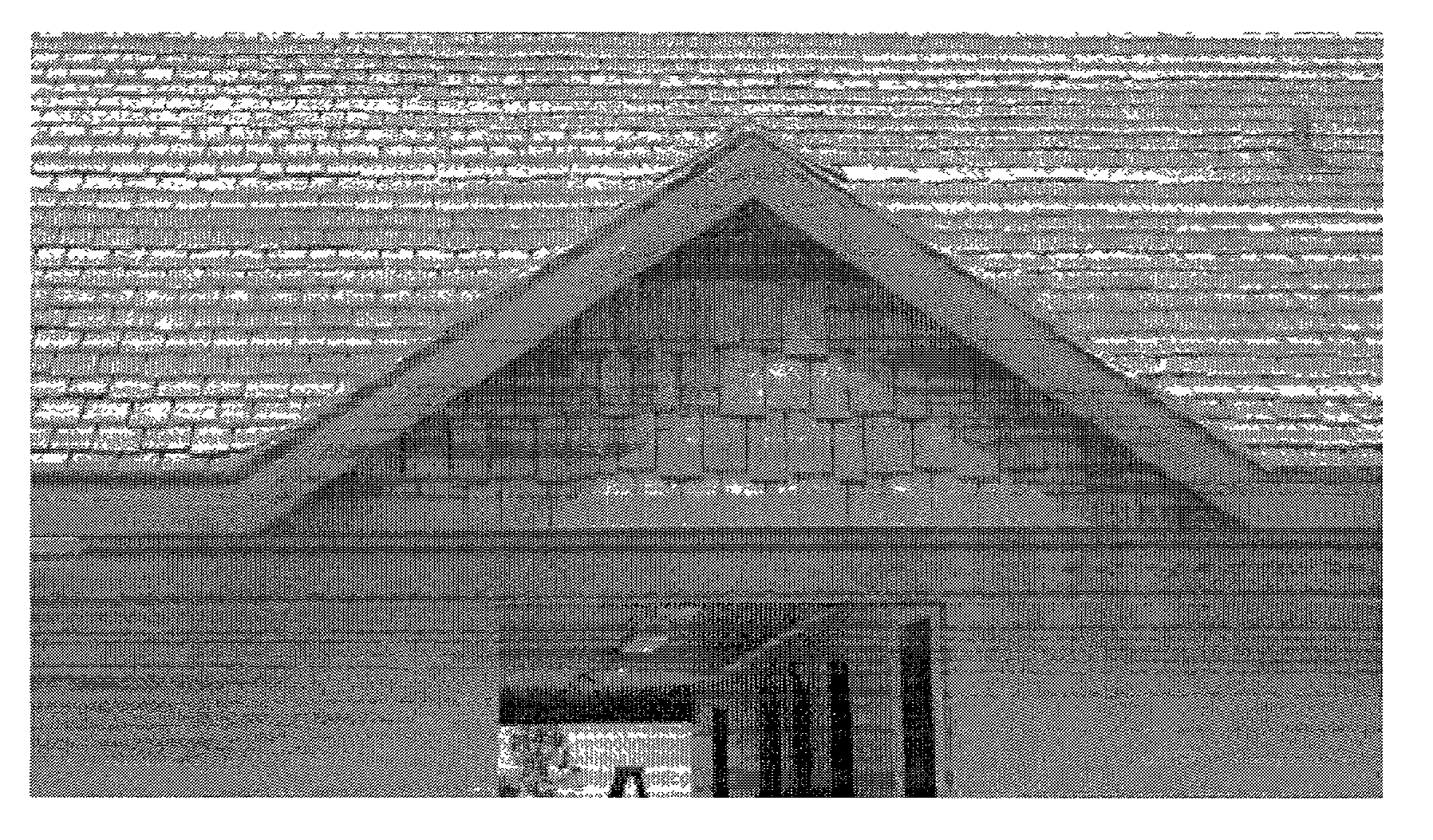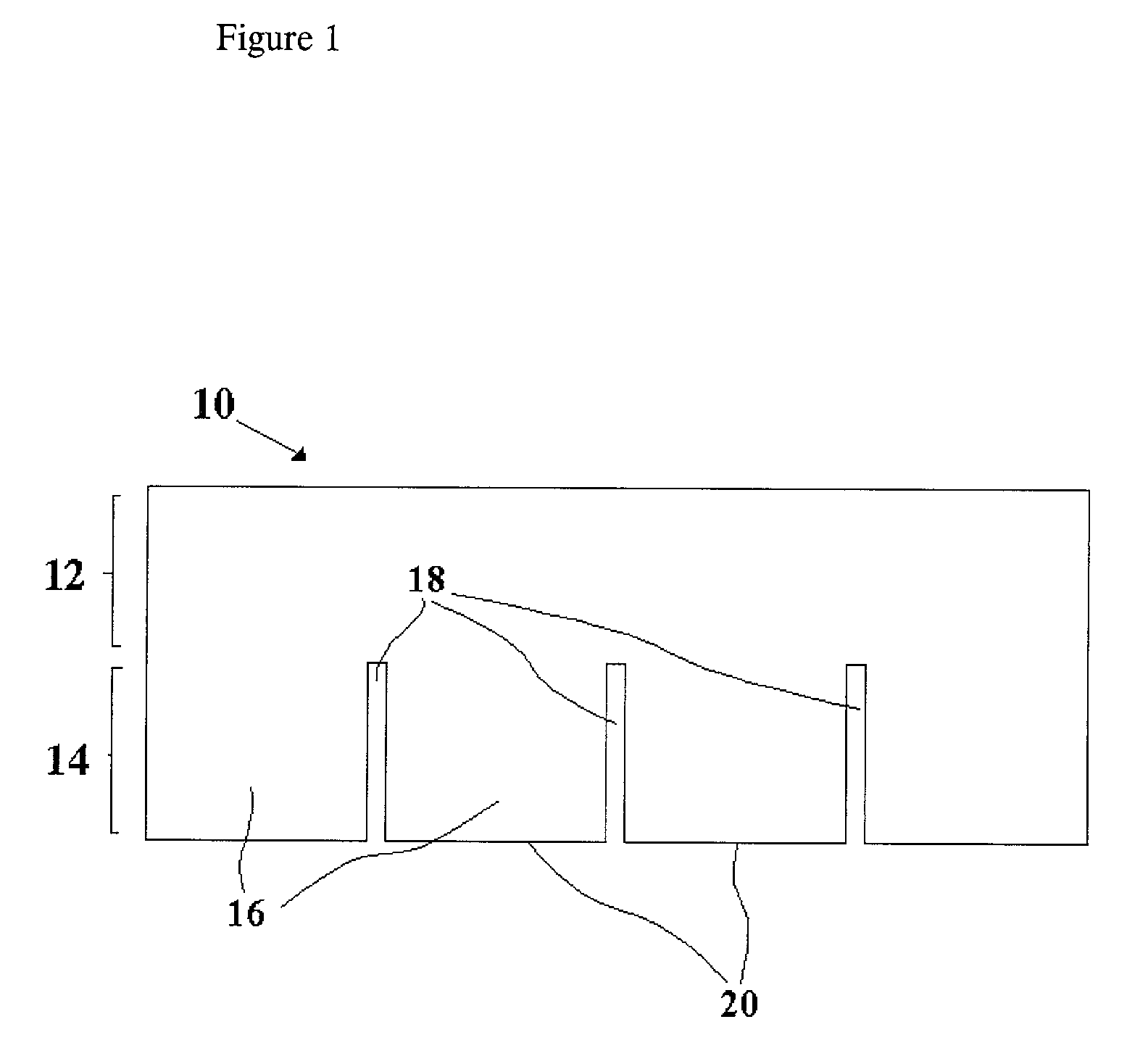Composite roofing panel
- Summary
- Abstract
- Description
- Claims
- Application Information
AI Technical Summary
Benefits of technology
Problems solved by technology
Method used
Image
Examples
example 1
[0048] The present example provides a panel having Class A fire resistance according to UL standards. A construction panel consisting of: (a) 57% rice hulls 16 / 80 mesh; (b) 0.4% UV stabilizer available from Ciba Geigy as 783 FDL (a hindered amine); (c) 0.2% Heat stabilizer available from Ciba Geigy as B225; (d) 1% available from Bayer as bayferrox 645 T brown pigment; (e) 15% Aluminum hydroxide; (f) 2% maleic acid grafted polyethylene (MAPE)--available from Dupont as MB226; (g) 18.7% recycled milk jug flakes (having a melt flow index of about 0.6); (h) 4.7% HDPE (having a melt flow index of about 35); and(i) 1% zinc borate available from U.S. Borax as firebrake ZB, was mixed together to form a homogenous composition. This composition was then placed into a mold and compression molded into a construction panel 43 inches wide, 21.5 inches tall and 0.75 inches thick at its butt end. The panel was comprised of 7 shakes (fingers) resembling hand-split cedar shakes with widths between 4 a...
example 2
[0049] This example provides a panel having Class C fire resistance according to UL standards. A construction panel consisting of: (a) 50% rice hulls 16 / 80 mesh; (b) 0.4% UV stabilizer available from Ciba Geigy as 783 FDL (hindered amine); (c) 0.2% Heat stabilizer available from Ciba Geigy as B225; (d) 1% available from Bayer as bayferrox 645 T brown pigment; (e) 2% maleic acid grafted polyethylene (MAPE) available from Dupont as MB226; (f) 36.3% recycled milk jug flakes (having a melt flow index of about 0.6); (g) 9.1% HDPE (having a melt flow index of about 35); and (h) 1% zinc borate available from U.S. Borax as firebrake ZB, was mixed together to form a homogenous composition. This composition was then placed into a mold and compression molded into a construction panel 43 inches wide, 21.5 inches tall and 0.75 inches thick at its butt end. The panel was comprised of 7 shakes (fingers) resembling hand-split cedar shakes with widths between 4 and 8 inches. The construction panel w...
PUM
| Property | Measurement | Unit |
|---|---|---|
| Fraction | aaaaa | aaaaa |
| Fraction | aaaaa | aaaaa |
| Fraction | aaaaa | aaaaa |
Abstract
Description
Claims
Application Information
 Login to View More
Login to View More - R&D
- Intellectual Property
- Life Sciences
- Materials
- Tech Scout
- Unparalleled Data Quality
- Higher Quality Content
- 60% Fewer Hallucinations
Browse by: Latest US Patents, China's latest patents, Technical Efficacy Thesaurus, Application Domain, Technology Topic, Popular Technical Reports.
© 2025 PatSnap. All rights reserved.Legal|Privacy policy|Modern Slavery Act Transparency Statement|Sitemap|About US| Contact US: help@patsnap.com



